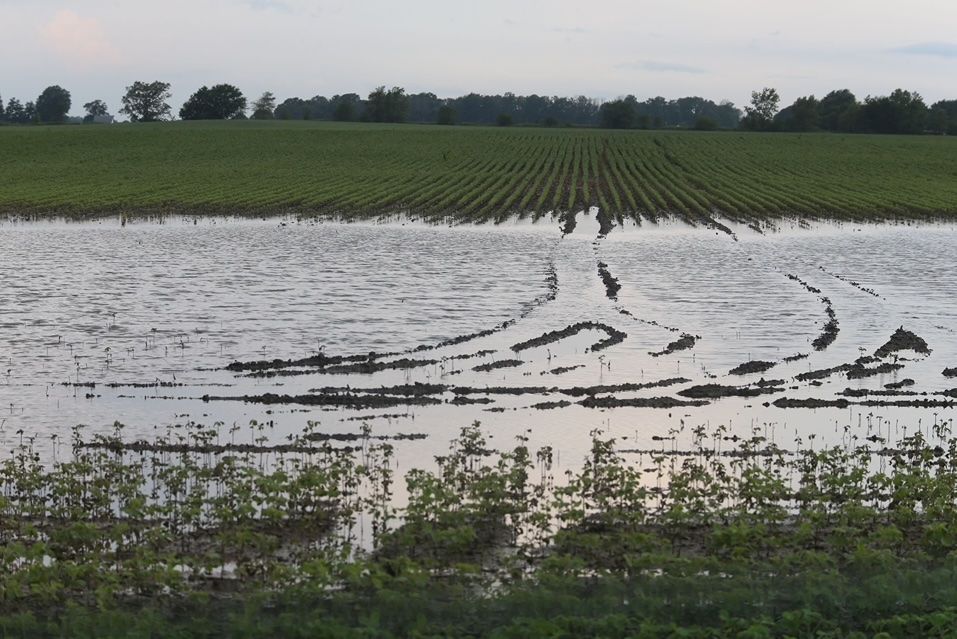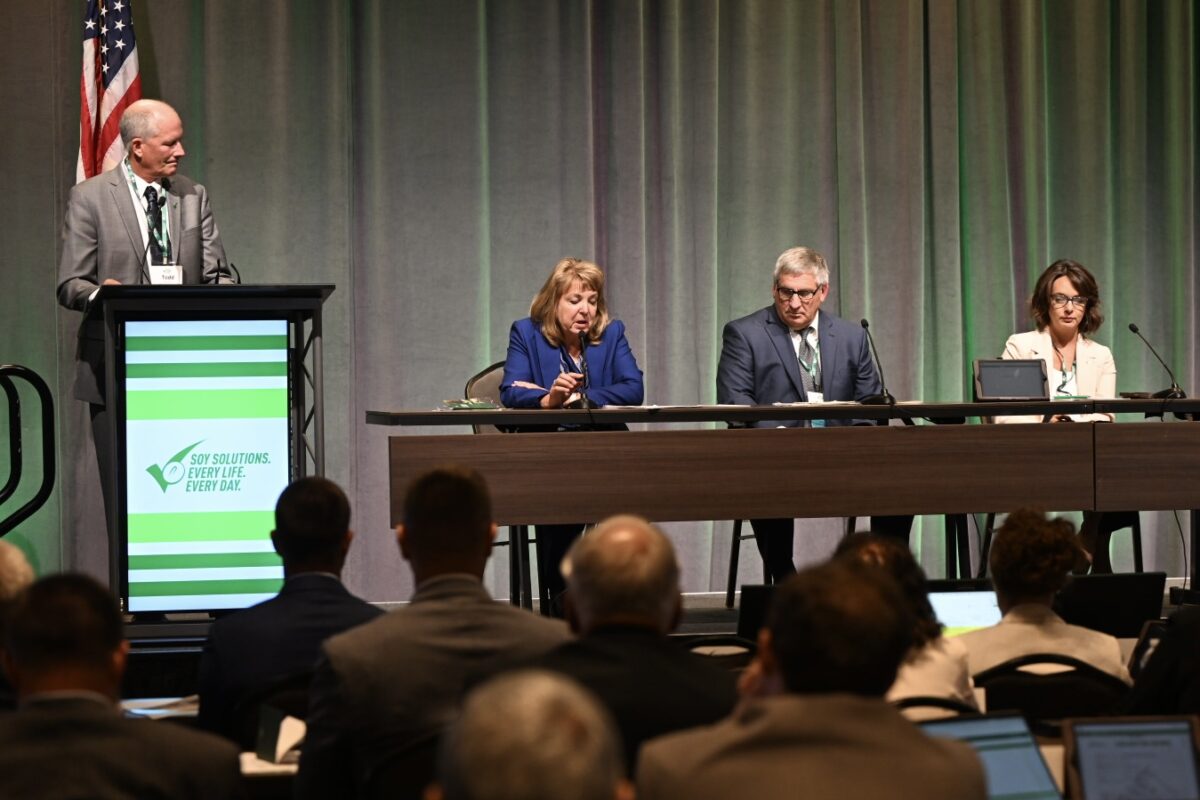Checkoff Research Is a Silver Lining After Drought Year

If you ask Grant Watermann to describe his 2021 growing season on his farm in eastern Colorado, he’d have one word for you.
Horrible.
Tumbleweeds, dust and wildfires staked their claim on America’s west last year. While the Midwest and other regions had plenty of rain, the western U.S. faced one of the worst droughts since the medieval plow was first used – nearly 12 centuries ago.
“In Colorado, where we farm, our spring was actually pretty wet. But it seemed like on June first, the water just shut off and I don’t think we got more than an inch of moisture all summer long,” says Watermann, who serves as a soy checkoff farmer-leader, raises cattle and grows soybeans, corn and wheat. Or at least tries to.
Echoing Watermann’s experience, the U.S. Drought Monitor on June 2 showed half of Colorado was experiencing severe drought conditions — and the state wasn’t alone. Based on the Palmer Drought Index, 99% of the West was experiencing moderate to extreme drought at that time.
“Thankfully, we’ve got our soybeans under irrigation but even then, you can’t beat some help from Mother Nature,” Watermann adds.
By July, there was no sign of the drought impacts lessening. Then came August, then September and by October, nearly all of Colorado was classified as at least abnormally dry.
“I know a lot of other farmers in my area cut more, but I could only cut 25% of my (spring) wheat,” says Watermann. “And my corn only made eight-to-nine bushels an acre. That’s all.”
When you’re facing a drought during a growing season, Watermann says, you’re pretty well locked into the decisions you’ve made. But last year’s weather certainly has him looking to make some changes for the 2022 growing season.
“We’re going into 2022 extremely, extremely dry yet again,” says Watermann.
Waterman says he’s shifting some acres to crops like sorghum and millet that require less water and looking at new soybean varieties with increased drought tolerance — something the soy checkoff has also been invested in.
The checkoff is currently funding research tools and genetic resources to make soybeans drought-resistant. Watermann says those options would have huge benefits on his farm.
Two research projects are currently leveraging checkoff funds to help U.S. soybean farmers across the country grow a more successful crop in drought conditions. One is focused on reducing the yield limitation of soybean varieties under a drought. The other is working to mitigate drought stress.
“Checkoff investments in things like drought-tolerant seed varieties and water management are critical on my farm and the many farms in the western U.S.,” says Watermann. “Without the checkoff, I don’t know if there’d be a push for these research investments. And I can’t farm without them.”
Looking to the future, the soy checkoff remains focused on bringing innovation, resources and value back to the farm. Working with researchers, industry professionals and extensions across the country, the soy checkoff stretches farmer dollars to spur innovation that will have a direct and lasting impact.
As farmers face the unique challenges that come with every growing season, they can be hopeful the varieties they purchase have better genetics like drought tolerance — innovation that is driven forward by the checkoff.



